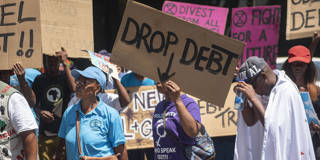The International Monetary Fund, the World Bank, and other multilateral development banks are trying to extinguish debt conflagrations in developing countries with buckets rather than hoses. These institutions must shift to a growth-focused approach that stabilizes economies without forcing them to cut essential public spending.
BOSTON – It is now conventionalwisdom that global capital flows to the developing world are pro-cyclical, increasing when advanced economies ease monetary policy and retreating when their interest rates rise. A case in point is the growing number of developing countries experiencing liquidity and solvency crises in the wake of the recent tightening cycle, which began in 2022. According to the United Nations, 25 governments now spend more than one-fifth of their revenue on debt service – the highest number since the mammoth debt crisis of the 1980s and 1990s. Interest payments now exceed spending on education or health in countries where 3.3 billion people live.

BOSTON – It is now conventionalwisdom that global capital flows to the developing world are pro-cyclical, increasing when advanced economies ease monetary policy and retreating when their interest rates rise. A case in point is the growing number of developing countries experiencing liquidity and solvency crises in the wake of the recent tightening cycle, which began in 2022. According to the United Nations, 25 governments now spend more than one-fifth of their revenue on debt service – the highest number since the mammoth debt crisis of the 1980s and 1990s. Interest payments now exceed spending on education or health in countries where 3.3 billion people live.